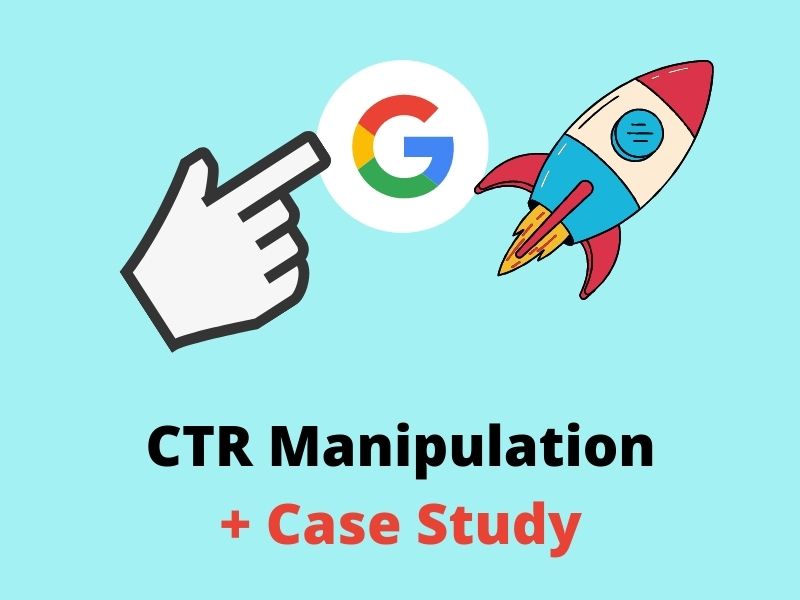LinkDaddy CTR Manipulation: Specialized Services for Boosted Internet Website Traffic
LinkDaddy CTR Manipulation: Specialized Services for Boosted Internet Website Traffic
Blog Article
Discovering the Connection In Between CTR Adjustment Providers and Individual Habits
In the realm of digital advertising and marketing, the impact of click-through rate (CTR) control solutions on user behavior remains a facility and appealing subject. As online systems progressively depend on CTR metrics to gauge the success of material, products, and solutions, understanding how these manipulated rates impact customer involvement and decision-making processes is extremely important. The interplay in between CTR manipulation and individual behavior elevates concerns about authenticity, dependability, and the moral implications of such techniques. By dissecting the elaborate connection between CTR control solutions and user behavior, fascinating insights arise that might improve our understanding of electronic marketing techniques and their impacts on consumers.
Impact of CTR Control on Actions
Examining the impact of Click-Through Rate (CTR) control on customer habits discloses essential understandings into the dynamics of online engagement. CTR adjustment includes unnaturally inflating the variety of clicks on a specific link or promotion to deceive customers and online search engine. This practice can bring about an altered perception of a page's popularity or relevance, ultimately influencing user actions.

Moreover, CTR manipulation can skew the information made use of by algorithms to individualize user experiences. This can lead to customers being served content that does not straighten with their preferences or rate of interests, inevitably leading to a decline in individual satisfaction and interaction. Recognizing the impact of CTR control on individual actions is essential for preserving openness and count on on the internet communications.
Customer Engagement With Controlled CTR
Individual interaction with controlled CTR information usually leads to skewed understandings of on-line web content appeal and significance. When customers interact with content based upon artificially inflated Click-Through Fees (CTR), they may believe that certain information, items, or services are more popular or reliable than they in fact are. This can cause customers making choices based upon deceptive information, causing potentially undesirable results.
Interaction metrics like sort, shares, comments, and time spent on a webpage are frequently influenced by CTR manipulation. Users might be a lot more likely to engage with content that shows up to have higher interaction rates, further bolstering the cycle of manipulated understandings. As an outcome, material makers and marketers may prioritize generating material that generates high CTR instead than concentrating on creating truly useful and relevant product.

Mental Effects of CTR Control

Additionally, the psychological effects of CTR adjustment can likewise manifest in modified decision-making processes. Users might be much more inclined to click material exclusively based upon its viewed appeal, rather than its actual worth or relevance to their needs. This behavioral change can result in a surface interaction with online web content, where individuals may forget top notch but much less popular offerings for those with synthetically increased CTRs.
Fundamentally, the psychological ramifications of CTR adjustment highlight the significance of keeping openness and credibility in online interactions to cultivate authentic customer engagement and trust fund.
Honest Factors To Consider in CTR Control
Considering the moral implications of controling click-through prices (CTR) in online systems is necessary for preserving stability and trust fund within the digital community. CTR manipulation increases worries regarding tricking customers, misshaping data analytics, and endangering the credibility of on-line content. One significant ethical consideration is the possible effect on user autonomy and decision-making. By synthetically blowing up CTR, customers may be misinformed right into clicking on links ctr manipulation press release or ads they would not have actually picked or else, causing an insincere online experience. CTR adjustment can skew the performance metrics that services depend on to make calculated decisions, eventually impacting market competition and customer depend on.
Another ethical facet to consider is the fairness of manipulating CTR to gain an unreasonable benefit over competitors. Participating in such techniques not just breaks principles of fair play but additionally weakens the count on that users position in on-line platforms. It is important for businesses and electronic marketers to promote honest standards in their practices to make certain transparency, reliability, and long-term sustainability in the on the internet environment.
Ramifications for Digital Marketing
With the increasing dependence on electronic platforms for marketing functions, the practice of adjusting click-through rates (CTR) postures considerable implications for the efficiency and stability of electronic advertising and marketing methods. CTR manipulation can cause manipulated data analytics, misdirecting marketing professionals right into thinking that their campaigns are doing better than they really are. This can cause misallocation of sources, with companies spending in underperforming strategies based upon falsified CTRs. When customers realize that CTRs have been controlled, it can wear down trust fund in the brand name, leading to long-term adverse consequences for client commitment and brand name online reputation.
Additionally, making use of CTR control solutions can develop an unfair competitive landscape, where companies that participate in such practices get a synthetic company website advantage over those that adhere to ethical marketing standards. This can stifle technology and creativity in electronic advertising, as success ends up being more about adjustment tactics than providing genuine worth to customers. Eventually, the implications of CTR adjustment for electronic advertising extend past short-term gains, impacting the total sustainability and credibility of advertising and marketing initiatives in the digital world.
Verdict
Finally, the relationship in between CTR manipulation solutions and individual actions is intricate and diverse. The impact of CTR control on behavior, customer engagement with adjusted CTR, psychological impacts, ethical factors to consider, and implications for electronic marketing all play a duty fit this partnership. Recognizing these dynamics is critical for marketing professionals and researchers alike in order to browse the moral ramifications and optimize the efficiency of their electronic marketing approaches.
Report this page